What Happened Immediately After 9/11
Last updated: May 7, 2023
On September 11, 2001, terrorists attacked the United States.
The US responded by ordering all civilian aircraft to land, sending Defense Condition alerts to the military, warning potential attackers with the threat of overwhelming force, and quickly adapting to this new type of war.
The Pentagon sustained minor damage with 125 deaths, while the World Trade Center site had the highest number of casualties.
The rescue efforts and medical response began immediately but were not progressing well. Numerous volunteers worked on debris clearing, investigation, and rescue efforts.
- On 9/11, terrorists attacked the US leading to the Global War on Terror
- US ordered all civilian aircraft to land, sent Defense Condition alerts & warned of force
- Pentagon sustained minor damage but more happened at the World Trade Center
- Rescue efforts began immediately with thousands of volunteers helping
- Investigation & clearing up the debris began soon after the attack
- Steel from the debris was reused in building USS New York
- The US declared a war on terrorism with Al Qaeda as the enemy number one

US Response to 9/11 00:00
- On September 11th, 2001, terrorists attacked the United States, leading to the Global War on Terror.
- The US and its allies were caught off guard by this new type of war, but quickly adapted.
- The US had to first deal with the wreckage caused by the attacks on the Pentagon and the World Trade Center.
Planes Ordered to Land 00:30
- Upon realizing the homeland was under attack, the US took unprecedented steps of ordering all civilian aircraft in US airspace to land at the nearest available airport.
- Hundreds of aircraft from various nations were forced to land, causing travel disruptions for tens of thousands of travelers.
- French tourists on their way to Hawaii were suddenly stuck in Montana, and the shutdown of air traffic affected incoming aircraft as well.
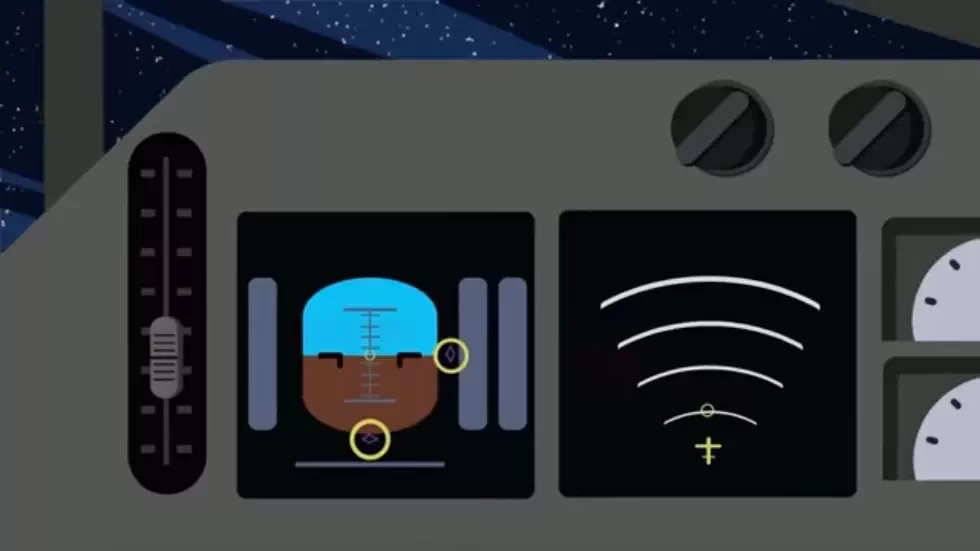
US Military Response 01:04
- US Air Force F-15s and F-16s, loaded for air-to-combat, immediately took up defense patrols over the American west and east coasts, as well as the airspace of Alaska north of North America.
- The United States implemented DEFCON 3, or Defense Condition, across all of its military facilities around the world.
- This meant that US forces, specially the air force, had to be ready to mobilize at a moment's notice, with all air force combat planes ready to take the skies within 15 minutes of alert.
Warning to Adversaries 01:35
- The US was concerned about further terrorist attacks using civilian aircraft and sent a clear and strong signal to any would-be adversary that while the US had just taken a nasty sucker punch to the face, it was still on its feet and ready to fight.
- Any attempt to capitalize on US confusion and weakness in the immediate aftermath of the attacks would be met with immediate and overwhelming force, including nuclear if need be.
- Civilian aircraft incoming to the United States were immediately ordered to divert and barred from entering American airspace.
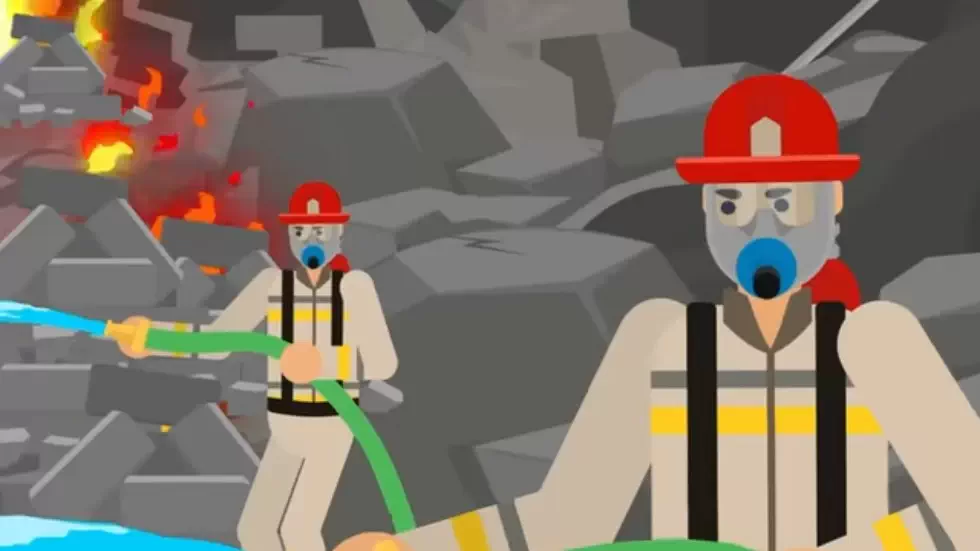
Pentagon Attack 02:20
- The Pentagon was a priority target, but the attack caused only relatively minor damage to the huge structure.
- 125 Pentagon workers were killed in the attack, mostly US Army or Navy employees.
- The highest ranking casualty was Lieutenant General Timothy Maude, an Army Deputy Chief of Staff.
World Trade Center Collapse 03:11
- The World Trade Center site was the grimmest of all.
- Firefighters from the New York City Fire Department rushed to the scene of the attack and braved the smoke, dust, and raging firestorm above their heads.
- Falling debris made the task even more difficult after the towers collapsed in on themselves.
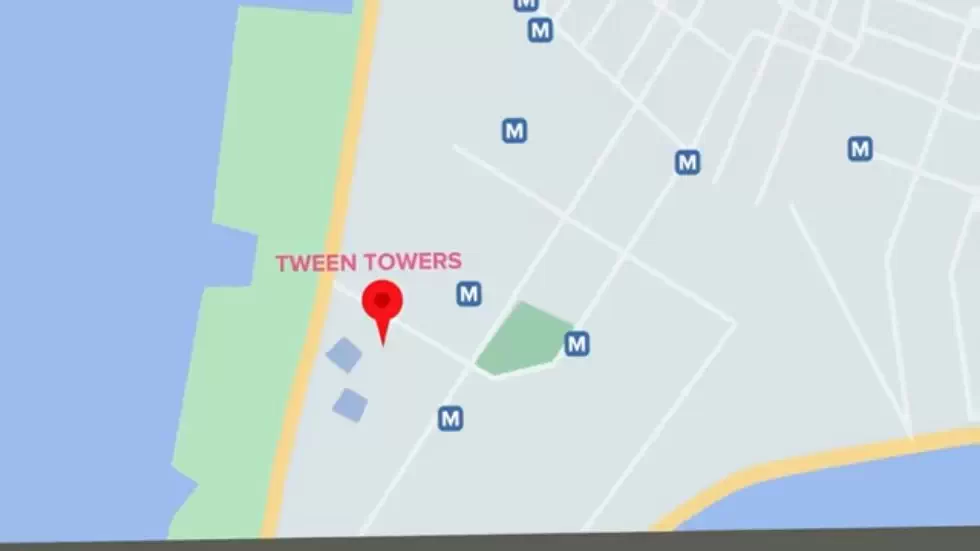
Medical Response 04:53
- The medical response began immediately after the first impact, with a casualty staging area moved to the corner of Vesey and West streets.
- Five triage areas would be set up around the entire site as volunteers flooded in to assist with the massive number of casualties being brought off site.
- Triage centers would be moved to the Chelsea Piers and Staten Island Ferry terminal in the wake of the collapse, while neighboring hospitals sped flow critical supplies.
Rescue Efforts 06:45
- Rescue efforts at the site, however, were not progressing well.
- Few had survived the collapse of the towers, and workers had to dig through two feet of ash and soot to reach them.
- Heavy equipment had to be used to lift up massive blocks of concrete and random wreckage.
- Only twenty people would be pulled alive from the wreckage, with the last survivor being rescued 27 hours after the collapse of the North Tower.
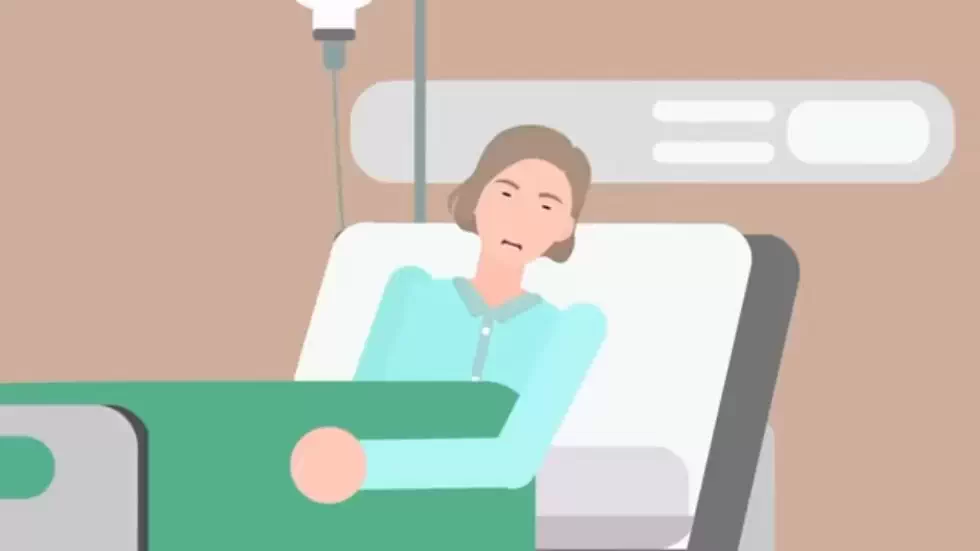
Volunteer Efforts 07:25
- Hundreds of volunteers and officials worked together to rescue victims.
- Approximately 400 rescue dogs were deployed, making it the largest deployment of dogs in US history.
- However, only cadavers were being recovered, which had a severe psychological impact on the rescue dogs.
- Rescue workers had to bury themselves and pretend to be rescued to lift the animal's flagging spirits.
- Thousands of volunteers began to show up around New York city to assist in whatever capacity they could.
- The city registered these individuals and shuttled them into lower Manhattan, which had been closed off to everyone but rescue and recovery workers.
- Construction projects came to a dead stop as workers walked off the job and headed to the site of the attack.
- Over one thousand ironworkers alone arrived at the site by the end of week one, with thousands of other specialists from the US, Canada, Mexico, and other nations.
Debris Clearing and Investigation 08:17
- Days after the attack, the focus shifted to investigation and clearing debris.
- Bucket brigades were organized from thousands of volunteers, with each person passing along a five-gallon bucket full of debris.
- At the end of each line, investigators sifted through debris for evidence and human remains, with the rest being deposited in a site known as 'the pile'.
- Workers wanted to avoid using the term 'ground zero' due to connotations of a nuclear attack.
- By September 24th, 100,000 tons of 1.8 million had been removed from the site, searched for clues or remains, and sent to the Fresh Kills landfill on Staten Island.
- Much of the steel would end up being recycled for use in other construction projects.
- 24 tons of steel would be used in constructing the USS New York, an amphibious transport dock ship meant to assist in amphibious assaults.
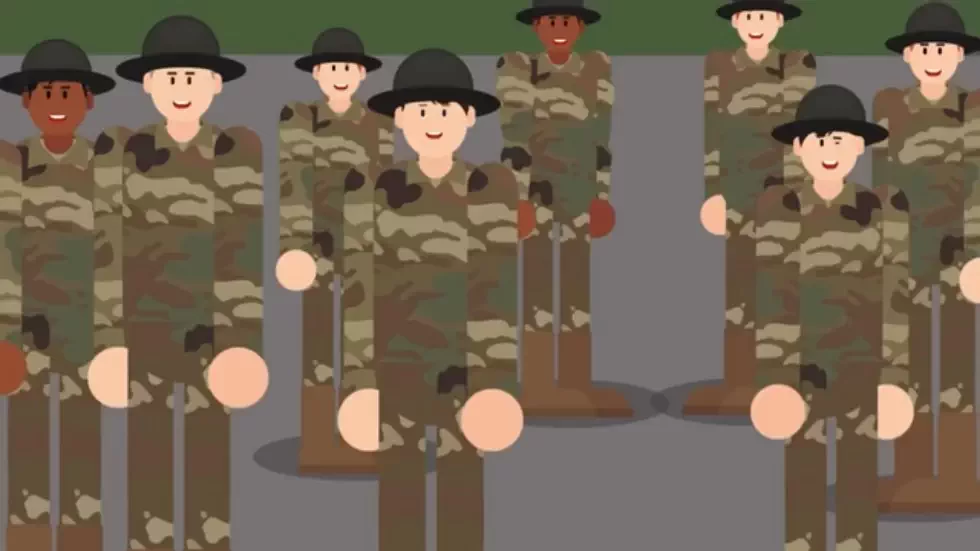
Attempted Heist 09:05
- Someone attempted to conduct what would have been the heist of the decade.
- Just days after the collapse, rescue workers discovered scorch marks on a basement doorway underneath 4 WTC.
- Upon exploring the building's basement, a vault containing large amounts of gold and silver coins and bars was discovered, all stored by the Bank of Nova Scotia.
- The would-be thieves were never discovered, and their attempt at a heist was likely foiled by the hundreds of rescue workers on-site and thousands of volunteers just past it.
Military Assistance 09:37
- The US military mounted immediate efforts to assist civilian personnel on the ground.
- The Civil Air Patrol was one of the few institutions allowed to launch aircraft, and it used the opportunity to conduct aerial reconnaissance missions over ground zero to provide analysis of the wreckage.
- CAP aircraft also assisted in airlifting personnel and medical equipment supplies.
- The first military personnel at ground zero were elements of the New York Army National Guard's 1-101st Cavalry, 258th Field Artillery, 442nd Military Police Company, and 69th Infantry Regiment.
- National Guard troops supplemented NYPD and FDNY, with 2,250 national guardsmen assisting in rescue efforts by the next morning.
- The armory of the 69th Infantry would become a Family Information Center to assist family members of victims in locating their loved ones or recovering remains.
- National Guardsmen also provided security to other possible target locations across New York, as well as assisted in traffic control.
- Soon after, the New Jersey National Guard sent its own personnel to assist.
- The US Navy redirected its hospital ship, USNS Comfort to Pier 92 in Manhattan, from which crew members helped feed and house 10,000 relief workers.
- Its galley provided 30,000 meals, while its medical facilities assisted injured rescue workers immediately after the attack and during the recovery process.
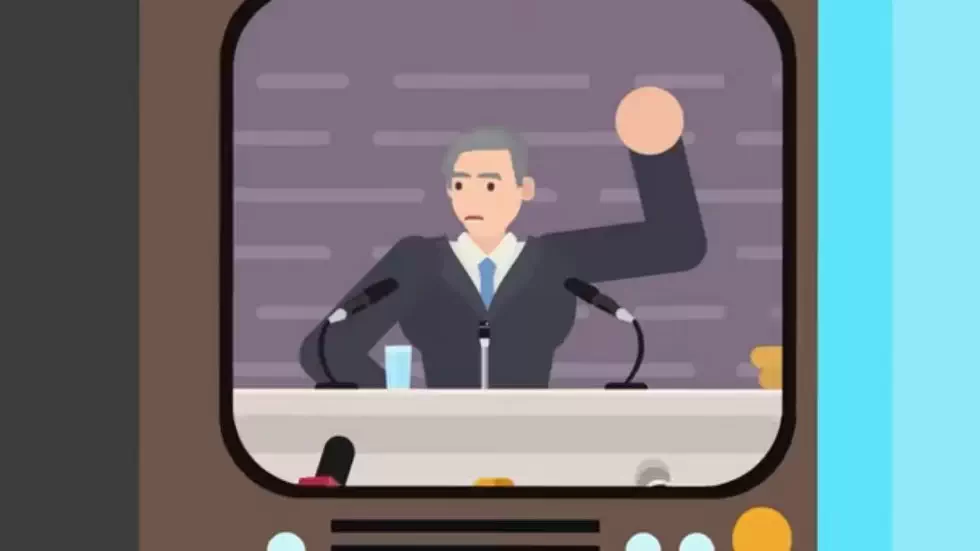
War on Terrorism 10:56
- With Osama Bin Laden and Al Qaeda claiming responsibility for the attacks, President Bush immediately declared a war on terrorism with the goal of destroying and dismantling global terror networks.
- Al Qaeda would be enemy number one.
- A NATO committee agreed that the attack on the US constituted an article 5 response, and overnight Osama Bin Laden had brought down the heat of the entire NATO alliance on his head.
- Across the nation, federal law enforcement and intelligence agencies coordinated to arrest 762 suspects with known or suspected ties to terror networks.
- However, none of those detained would be charged with terrorism, and the response is largely seen as a knee-jerk response to the September 11th attacks.
- To head off growing Islamophobia by parts of the US population, President Bush visited the Islamic Center of Washington and reminded the nation that Arab Muslims living in the US were still patriots.
- Sadly, a 1600 percent surge in hate crimes or harassment of Muslims, Arabs, Middle Easterners, and South Asians would occur in the days immediately following the attacks.
- Immediately after the attacks, President Bush took legislative action to shut down financial assets of known terrorists and their financial networks.
- This froze billions of dollars in assets and would be the first shot in the global war on terror.
- On September 18th, a joint resolution from Congress gives President Bush the authority to use “all necessary and appropriate force” against the planners and instigators of the September 11th attacks.
- Two days later, the president announces the start of a global war on terror.
- Osama Bin Laden had horrendously misjudged America's response to the September 11th attacks. He believed that the US would respond in one of two ways: a general pullout from the Middle East or a round of cruise missile strikes against training facilities.
- Instead, the United States chose a third option- one that Bin Laden could have never seen coming, which would spell his personal doom - the destruction of the Al Qaeda terror network.
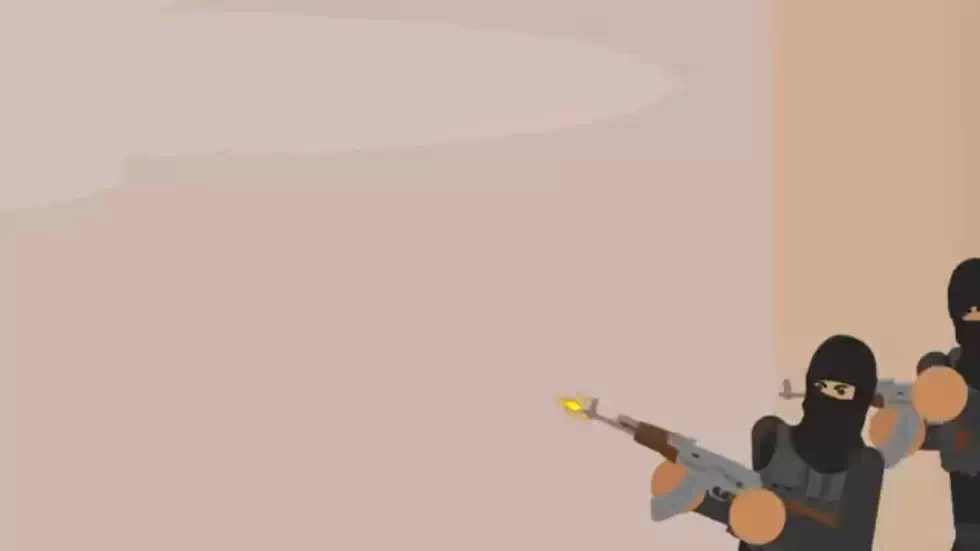
The US initiates plan to overthrow the Taliban 14:31
- President Bush issued an ultimatum to the Taliban shortly after the 9/11 terror attacks against the US.
- When the Taliban refused, the US decided to militarily overthrow them.
- The decision was based on the principle that those who harbor terrorists are themselves terrorists.
- The US troops would lead the war against the Taliban.
UN Approval for Military Action 14:51
- The Bush administration sought UN approval for military action against the Taliban.
- The Security Council Resolution 1368 was the result of the approval.
- The resolution was widely interpreted as authorization for military action, but technically it did not directly authorize the invasion of Afghanistan.
- China, a member of the Security Council, wished for the US to seek full authorization from the UN to control US military action by threatening a veto vote.
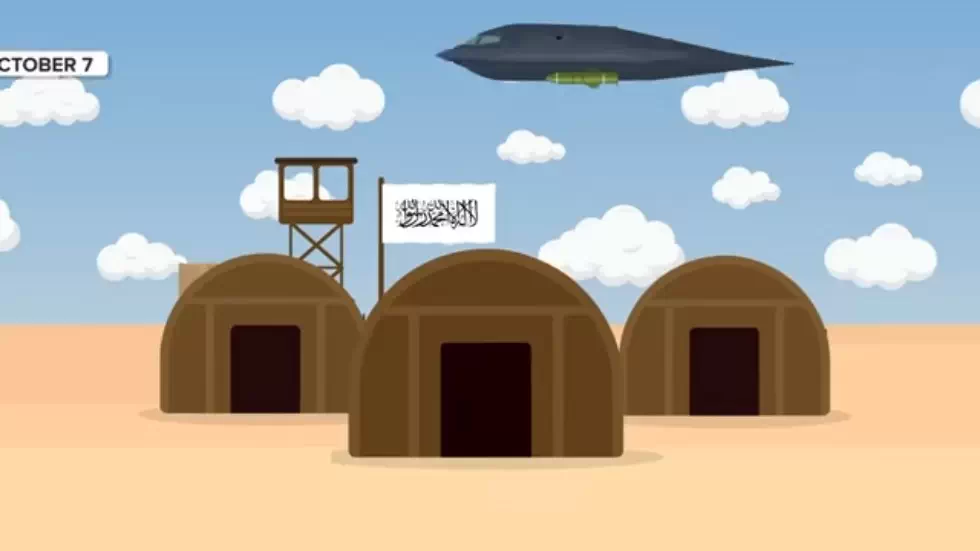
The Taliban Offers to Turn Over Bin Laden 15:29
- On October 4th, the Taliban offered to turn over Bin Laden to Pakistan to be put on trial in an international tribunal that operated according to Islamic shar'ia law.
- The proposal was rejected by the US as they knew that justice would never be served in what amounted to a sham trial.
US Invokes Right to Self-defense 15:43
- On October 7th, 2001, less than a month after the 9/11 attacks, American combat aircraft launched a blistering assault on Taliban positions in Afghanistan.
- The air attacks were coordinated with an offensive by the Northern Alliance.
- Approximately 1,000 American special operations forces and Central Intelligence Agency field operatives were also involved.
- The US invoked the right to self-defense and UN Resolution 1368 as justification for the invasion.
- American and British aircraft continued a blistering offensive against Taliban strongholds, including cruise missiles launched from warships in the Arabian Sea that flew over Pakistan to strike military targets inside Afghanistan.
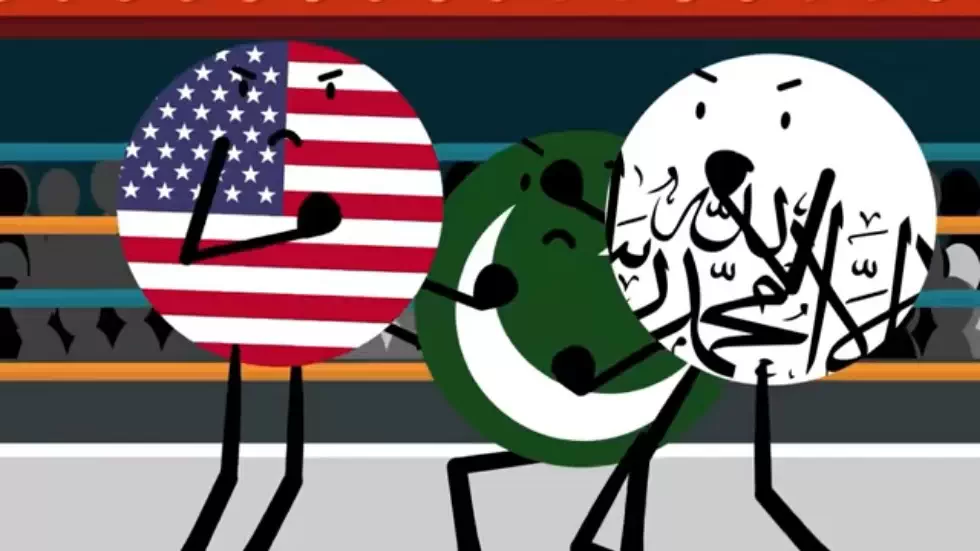
Ground War Victories 15:53
- The bombing campaign was so fierce that just like in Desert Storm, Taliban forces surrendered or defected en masse.
- The first major victory of the ground war came on November 9th, when the Taliban stronghold of Mazar-i-Sharif was captured.
- This allowed US-backed forces to rapidly conquer most of northern Afghanistan.
- Four days after the capture of Mazar-i-Sharif, Kabul was captured due to a surprise Taliban withdrawal from the city.
- As the pressure mounted, Taliban in the north of the country were forced into a last-ditch defense in Kunduz.
- However, under withering air attack, Northern Alliance forces destroyed Taliban defenses and took the city on November 26th.
Pakistan's Role in the War 18:00
- Pakistan was secretly aiding and even equipping the Taliban and other insurgents as they crossed the border into Afghanistan.
- Pakistan's Inter-services Intelligence agency ran a massive effort to arm, feed, and even provide medical care for wounded Taliban and other insurgent fighters.
- While never verified, it is strongly suspected that Pakistan was also fully aware of the fact that Osama Bin Laden was hiding in their territory and likely assisted efforts to keep him hidden from US sources.
- Pakistan had every incentive to keep the Taliban in power and under their influence, as US plans to uproot Al Qaeda directly clashed with what they saw as a national security priority.

The First Battle of Kandahar 19:22
- As the assault on Kandahar began, the Taliban agreed to surrender to the US, but the deal was rejected by Secretary of Defense Donald Rumsfeld.
- A precondition for the surrender was that Taliban leader Mullah Mohammed Omar be granted amnesty, which was unacceptable to the US.
- The First Battle of Kandahar was on, and the city was heavily defended.
- It was a difficult city to capture due to its dense urban nature.
- Defended by fanatical Taliban fighters who knew this was their last stand, the US moved to prepare Northern Alliance forces for the tough fight ahead.
- On November 22nd, a force of 100 vehicles advanced on Kandahar through the desert.
- The Taliban fighters were outnumbered and outgunned, and their forces were put into full retreat, vacating the city.
Karzai's forces and the fall of Kandahar 21:28
- After 9/11, Hamid Karzai led an attack on Kandahar with about 800 men.
- Karzai's forces took town Petaw without a fight but met with resistance when they attempted to take the bridge at Sayd Alim Kalay.
- The US aided Karzai's forces with two days of heavy airstrikes using precision munitions that left the bridge intact.
- On the 4th of December, Karzai's forces managed to secure the bridge after setting up a beachhead on the other side.
- Unfortunately, a stray American bomb landed on a US position the next day, killing three special forces soldiers and wounding Karzai.
- Karzai's forces began negotiations with the Taliban for the surrender of Kandahar.
- Sherzai's forces initiated an assault on Kandahar's airport, but were surprised to discover little resistance from the Taliban.
- The Taliban had already surrendered the city to Karzai, but it was Sherzai at the head of his militia who entered the city and was declared governor of the city.

Tora Bora and the hunt for Osama Bin Laden 22:40
- As Kandahar was being secured, the US and its allies launched a massive attack against al Qaeda forces in the cave complex of Tora Bora.
- On December 3rd, CIA operatives and members of the 5th Special Forces Group began an assault on the plains leading up to the cave complexes.
- Codenamed Jawbreaker, the task force coordinated with Northern Alliance fighters and called in a series of non-stop airstrikes on enemy positions to force them to retreat further up the mountains.
- A week later, 70 special operators from the US Army's Delta Force's A Squadron and Air Force Special Tactics Squadron joined Jawbreaker via vehicle to lead the ground operation against al Qaeda positions.
- With the aid of US, German, and British special forces, Northern Alliance fighters made progress into the cave complexes.
- However, al-Qaeda forces contacted a local Afghan commander and negotiated a truce, but the time requested to surrender their weapons was believed to actually be used to allow senior al-Qaeda officials to escape.
- On the 12th of December, fighting resumed as a rear guard attempted to buy time for al-Qaeda's main forces to escape into Pakistan.
- Alliance forces, along with US special and heavy air support, assaulted heavily fortified al-Qaeda positions in caves and bunkers.
- Thirteen British special forces operators alongside German and American operators led the attack against the complex of Tora Bora itself and helped secure the flanks of the Alliance assault against al-Qaeda ambush, which was critical in the success of the operation.
- Al-Qaeda's last stronghold was destroyed by December 17th, and US special forces immediately launched a search for Osama Bin Laden.
- Bin Laden, however, had managed to successfully escape into Pakistan.
US drone strikes in Pakistan 26:02
- After the taking of Kandahar and the destruction of al-Qaeda's stronghold in Tora Bora, surviving Taliban and al-Qaeda forces either went to ground or escaped into Pakistan.
- From the safety of Pakistan's Federally Administered Tribal Areas, an insurgency blossomed, which allowed the Taliban to launch repeated assaults against the democratic government taking root in Afghanistan.
- Without permission from Pakistan to send troops to root out the cancer growing in its tribal areas, the US was forced to rely on drones to surveil and target enemy leadership.
- These drone strikes drew global condemnation, thanks in no part to the fact that Pakistan's ISI itself fanned the flames of outrage in order to limit US influence.
- The truth is that casualties from US drone strikes were self-reported by forces operating in the Tribal areas, which did not allow Pakistani government investigators to enter.
- Thus, casualty figures were never truly verified by anyone other than the very insurgents and terrorists the US was targeting, and the fact that these individuals don't wear military uniforms allowed them to claim that all the victims, or at least most, were innocent civilians.
